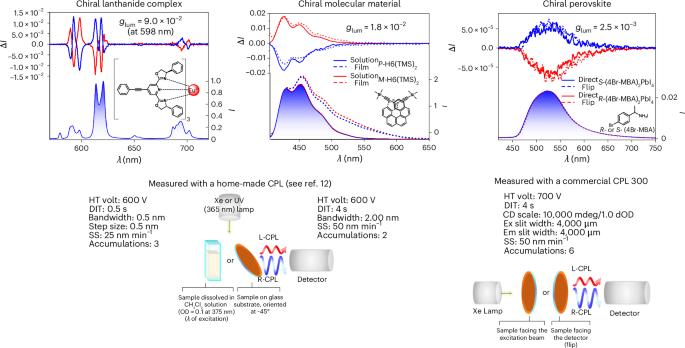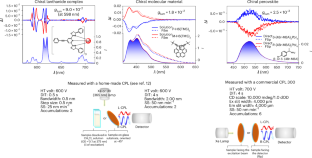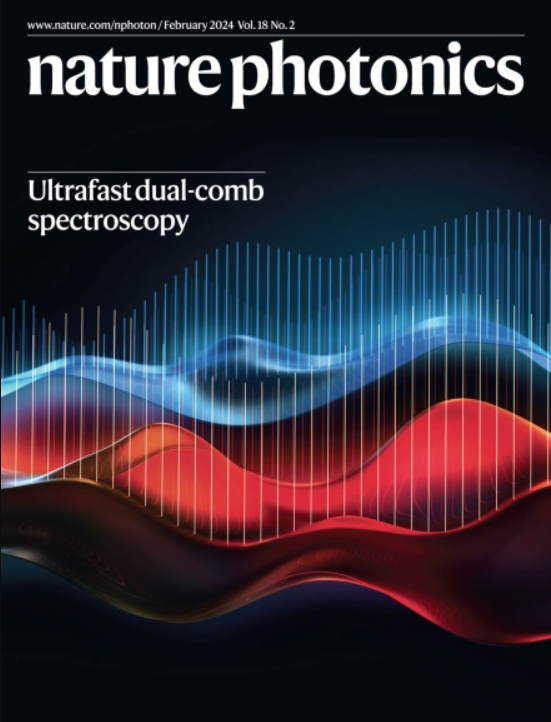规范手性材料圆偏振发光的表征
IF 32.9
1区 物理与天体物理
Q1 OPTICS
引用次数: 0
摘要
圆偏振发光这一激动人心的领域激励着研究人员设计具有工程结构和电子特征的创新手性发光系统,包括小有机分子、无机配合物、钙钛矿、超分子和聚合物系统。共同的目标是让这些材料与左右圆偏振光的相互作用非常不同,使它们能够调制和传输光信号的偏振状态。测量的手性活性通常用发光不对称因子来量化,这自然成为表征手性发射体性能的关键参数。然而,由于涉及不同的光物理过程和不同的测量条件,这一因素的正确量化可能具有挑战性,这使得难以可靠地比较不同的材料设计和设备。在这里,我们提供实用的建议和指南的测量条件和程序的各种类型的材料,旨在提高重现性和可靠性的热学测量。我们希望这些最佳实践能够解决与不一致性和标准化相关的共同挑战,从而使社区受益。本文章由计算机程序翻译,如有差异,请以英文原文为准。


Standardizing the characterization of circularly polarized luminescence of chiral materials
The exciting field of circularly polarized luminescence has motivated researchers to design innovative chiral emitting systems with engineered structural and electronic features, including small organic molecules, inorganic complexes, perovskites and supramolecular and polymeric systems. The common goal is for these materials to interact very differently with left vs. right circularly polarized light, giving them the ability to modulate and transmit the polarization state of a light signal. The measured chiroptical activity is often quantified by the luminescence dissymmetry factor, which has naturally become the key parameter for characterizing the performance of chiral emitters. However, the correct quantification of this factor can be challenging due to the different photophysical processes involved and varying measurement conditions, making it difficult to reliably compare different material designs and devices. Here we offer practical advice and guidelines on measurement conditions and procedures for various classes of material, aiming to enhance the reproducibility and reliability of chiroptical measurements. We hope that these best practices will benefit the community by addressing common challenges related to inconsistencies and standardization. This Perspective offers practical guidelines for the optical characterization of chiral materials, aiming to improve the consistency and reproducibility of experimental results.
求助全文
通过发布文献求助,成功后即可免费获取论文全文。
去求助
来源期刊

Nature Photonics
物理-光学
CiteScore
54.20
自引率
1.70%
发文量
158
审稿时长
12 months
期刊介绍:
Nature Photonics is a monthly journal dedicated to the scientific study and application of light, known as Photonics. It publishes top-quality, peer-reviewed research across all areas of light generation, manipulation, and detection.
The journal encompasses research into the fundamental properties of light and its interactions with matter, as well as the latest developments in optoelectronic devices and emerging photonics applications. Topics covered include lasers, LEDs, imaging, detectors, optoelectronic devices, quantum optics, biophotonics, optical data storage, spectroscopy, fiber optics, solar energy, displays, terahertz technology, nonlinear optics, plasmonics, nanophotonics, and X-rays.
In addition to research papers and review articles summarizing scientific findings in optoelectronics, Nature Photonics also features News and Views pieces and research highlights. It uniquely includes articles on the business aspects of the industry, such as technology commercialization and market analysis, offering a comprehensive perspective on the field.
 求助内容:
求助内容: 应助结果提醒方式:
应助结果提醒方式:


